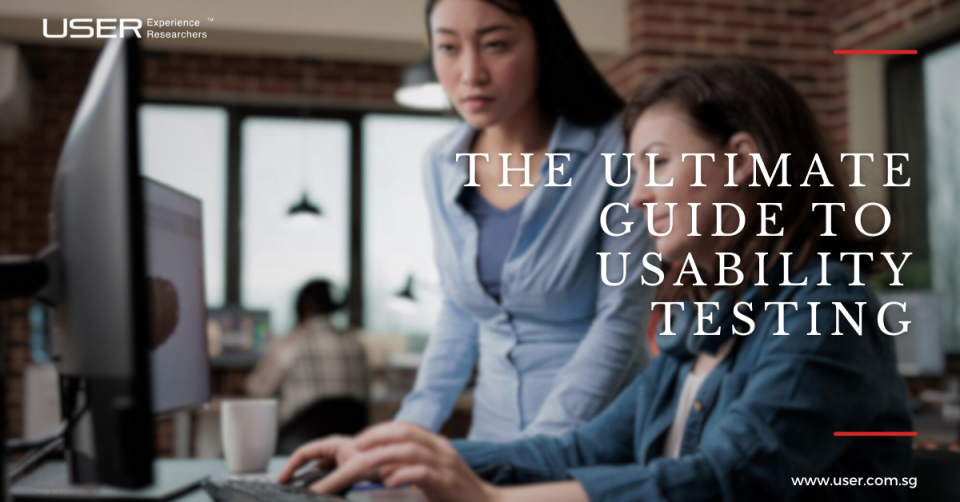User Experience Testing and Design – A Guide for Beginners

Wondering what user testing is all about or how does it work?
Let us take a quick look at what user testing entails and the reasons why it is a valuable tool. We will also discuss the different types of user testing, and the situations where they work best.
What is User Testing?
User testing is a method used in developing user-centered designs. It allows real users to experience a product, so they can provide insightful evaluation. From this testing, direct input and information are gathered on how actual users approach a product, and this is an irreplaceable usability practice. User testing is different from usability inspection methods where experts use various techniques to evaluate a product without involving the real users.
In marketing, many people mistake user testing for focus group and other market research methods. Software developers also sometimes mistake it for quality assurance testing and the wrong assumption cuts across the board. Some consider user testing as a waste of money because they feel that the product could be made perfect at first try, and there will be no need for any form of testing with any user. User testing works and thrives on the feedback collected from real users of the product, to critical details that experts might not realise during the design and manufacturing stages.
The automotive industry is an excellent example of user testing advocates. Automakers will never put a car in a showroom without subjecting it to different tests. This includes driving the car over long miles and crash testing it to come up with a performance-based plan on how to fine-tune it. This explains why user testing is vital to the commercial web and mobile software designs in producing a perfect product.
An optimal user experience cannot be achieved without the input of real users, no matter how brilliant software designers and developers are on the project or product.
How Does User Testing Works?
User testing on a website involves performing a specific task on a newly designed product such a website or intranet. It could be a mock-up website if it is still under construction. User testing is carried out by one individual per time and not in a group as the case with focus group where feedback comes from a group of people all at once.
The user who will test the product must come from a target group and should be a potential user or buyer. The user’s actions are recorded for later data analysis. The output depends on the quality of feedback that will be collected during the process. The more detailed and transparent the user’s opinion is, the more valuable it can be.
User Testing Versus Expert Review

No one is an island of knowledge
Everyone is limited in knowledge in one form of the other, and this limitation plays out in different ways. Experts are not exempted even in their field of expertise as they can also be limited in their judgment.
Convincing Proof
Imagine a video recording that vividly shows the discomfort of customers as they struggle using your product. This is a clear indicator about how users feel and is more than enough sign that product changes are necessary. This type of video is a great reminder of actual responses from target audience and can help keep the design team on the right track.
Facts win opinions
User test reveals issues that could otherwise be easily overlooked, such as the opinion of a client toward an expert’s advice. A client’s opinion counts if they are going to use a particular product, and user testing highlights what they consider essential. The truth matters more than expert opinions, so user testing cannot be set aside. The fact that 3 out of 4 clients had trouble navigating a filter on an online shop is enough proof that something must be done to ease user experience.
Types of Common User Testing Methods

Moderated User Testing
This old-school method of user testing remains relevant to this point in time. It involves the moderator sitting next to person doing the test, and the moderation starts to ask a question and takes note of the reactions and expression if the user. This method allows additional questions to be asked, giving a deep insight into what a client thinks about the product. The reactions and information drawn from this technique helps to generate data that other user testing method cannot replicate, making it always relevant despite how traditional it might look. The ability of the moderator to effectively moderate goes a long way in determining the success of the test. The look, sitting posture, and other salient issues can significantly influence the outcome of the test.
Remote Moderated User Testing
As an improvement on the moderated user testing method, remote moderated user testing allows testing to be done remotely without the physical presence of the moderator, which can save time and money. There is flexibility to when and where the test can be done. With the help of a screen sharing software, the test participant and the moderator can hold their session at different locations. The session can be aided by the use of a webcam to enable the moderator to see the face of the test user. This method is suitable for when the user and moderator are located far away from each other, such as being in different countries.
Remote Unmoderated User Testing
In this form of testing, moderation is not required, and users simply surf a website and read the task to be carried out on the screen. This Unmoderated session can take place in two different forms.
Recorded image and sound – this method asks the user to think out loud, but this method rarely gets sincere opinion from users as most time, the sound is less professional.
Recorded mouse movements and time – this method involves the user test participant performing specific task and filling out a questionnaire as a form of feedback after the session. This is used when interacting with a large group of users.
Advantages of User Testing
The advantages of user testing include:
- Direct feedback from the users to the project team
- Issues and potential problems are quickly identified and corrected before the launch of the product
- User testing resolves issue that would have created heated debate. Users will give unbiased opinion apart from that of the project team
- The risk of a having a failed product is reduced significantly
- The chance of usage and repeat usage is increased
- Result is quickly achieved without waste of time due mistakes and error on the product. Targets are met faster.
Conclusion
User testing might not be able to give a full picture of how product usage will turn out in the future, but it remains the best method to reduce problems that can mar a product after launch. Correcting these issues ahead of time increases the chance of the product succeeding faster by meeting user’s expectations and needs.
For more information on how usability testing works, reach out to us at https://www.user.com.sg/contact/. USER Experience Researchers is a leading digital solutions provider in Singapore, and our team of UX UI experts can assist you in developing effective user-centred products and services.




